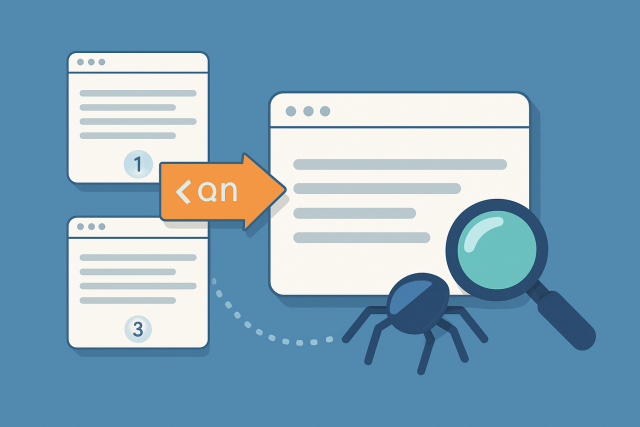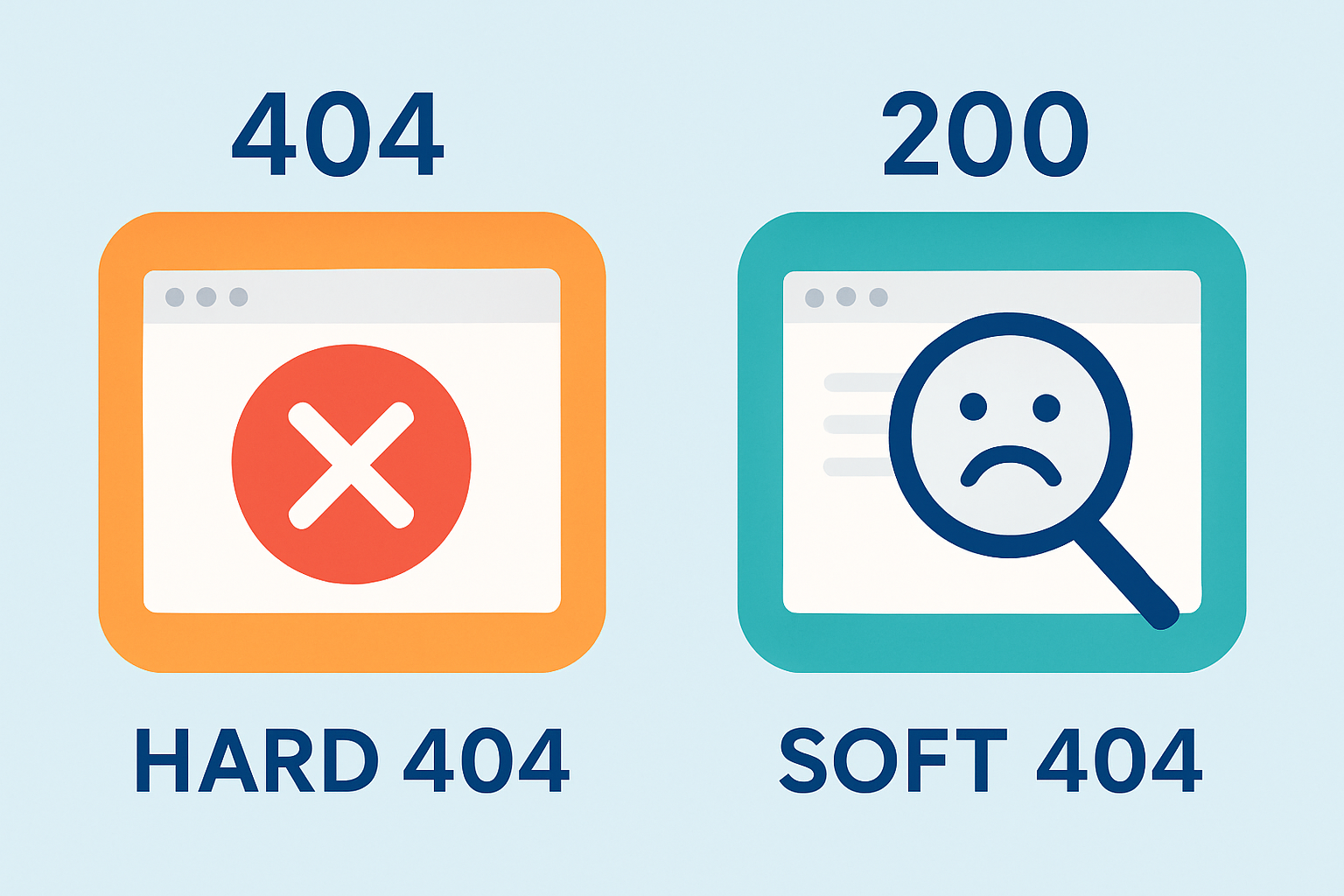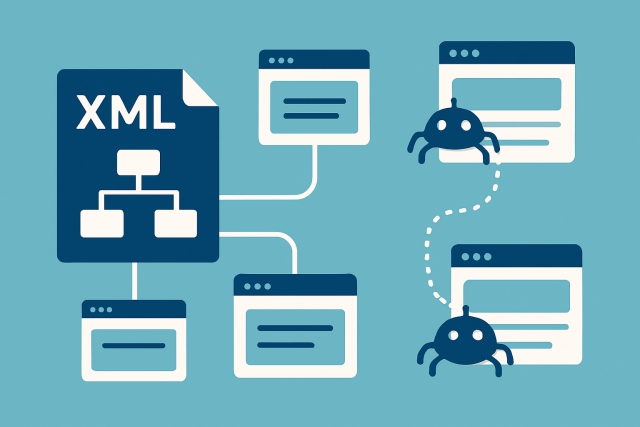
What is canonical pagination and why it matters for SEO?
Canonical pagination helps search engines identify the preferred page among multiple paginated URLs,...

If you're managing your website and aiming to boost its search engine mojo, it's crucial to understand what is a soft 404 error, as they can be a sneak attack. Unlike a typical 404 error that plainly shouts 'Page Not Found,' a soft 404 quietly shows that message while handing out a happy HTTP status code, usually 200. This mixed signal can throw a wrench in your site's SEO efforts and leave visitors scratching their heads.
It’s kind of like strolling into a store that looks shut for the day — the lights are off and there’s a sign that reads "Sorry, we are not open today" but the door is surprisingly unlocked and almost invites you to step inside.
Soft 404 pages show messages like "Page Not Found" but send a 200 status back to the server. Because of this trick, search engines treat these pages as if they are valid. Confusion occurs since search engines might index these error pages like they are real. Meanwhile, visitors see missing or empty content. This mix-up can affect how the website’s structure is interpreted and cause problems with indexing and ranking.
Soft 404 errors can be a headache because they gobble up your website's crawl budget and make indexing more of a maze. They generally leave visitors feeling lost. Search engines thrive on the right HTTP status codes so they can quickly figure out which pages are worth their time. When error pages serve a 200 status instead of the proper error code, it leads to crawling inefficiencies and can quietly tank your rankings over time.

Illustration comparing hard 404 error page with proper 404 status and a soft 404 page showing error content but returning a 200 status.
Soft 404 errors usually sneak in thanks to server misconfigurations or design choices that mix up the HTTP status codes. They might flash a friendly message to visitors while still sending back a 200 status like nothing’s wrong. You’ll often see these pop up when pages barely have any useful content, or when CMS setups don’t quite know what to do with deleted URLs.
Detecting soft 404 errors usually means teaming up automated tools with a bit of good old-fashioned hands-on sleuthing. Google Search Console often throws up these issues in the Coverage report, like a helpful nudge. SEO crawling tools tend to go through your entire site, hunting for pages that return a 200 status code but barely have any meaningful content to show for it. And then there’s the manual part—digging into HTTP headers and eyeballing what’s actually visible on the page to figure out if it’s genuinely there or just pretending to be a soft 404.
Dive into Google Search Console's Coverage report to catch any soft 404 warnings that Google might have flagged for you.
Give your site a once-over with crawler tools like Screaming Frog or use the site audit features in platforms like Semrush or Moz to get a clear picture of your status codes.
For those pages that raise an eyebrow, roll up your sleeves and manually check the HTTP response headers using your browser's developer tools or command-line utilities.
Take a good hard look at the page content itself—sometimes pages tagged as soft 404 don’t offer meaningful or useful info and it’s worth knowing when that’s the case.
Fixing soft 404 issues means ensuring your server sends the correct HTTP status codes and improving thin content pages so they provide something useful. You should also set up proper redirects when needed. If pages are mistakenly flagged as soft 404s, update them to serve a genuine 404 or 410 status, especially if the content is gone. For pages that exist but feel bare-bones, adding meaningful content can make a big difference. Also, carefully check your CMS and server settings to avoid sending the wrong status codes.
Make sure your server returns a 404 (Not Found) or 410 (Gone) status for pages that are genuinely missing—no pretending they’re still around.
Beef up thin or low-quality pages by adding detailed, spot-on content that really hits the mark for what users are hunting for.
Use 301 redirects to steer visitors from removed URLs to the right existing pages, so you don’t lose any link juice along the way.
Double-check your CMS settings to confirm that error pages actually deliver 404 status codes, not the sneaky 200 OK ones pretending everything is fine.
Build custom error pages that are user-friendly but still wink at search engines by sending the correct HTTP status code.
Fixing soft 404 errors is a bit like putting up clear, easy-to-spot signs when you’re trying to find your way around a new town. Without those signs, visitors and search engines can easily wander off the path, left scratching their heads about what’s really there. When you provide clear signals, navigation becomes a breeze and, honestly, it helps build a kind of quiet trust in the way your site is put together.
Preventing soft 404 errors calls for a proactive game plan, which starts with understanding exactly what is a soft 404. It is wise to regularly scan your site for broken or low-quality pages, set up your CMS and server properly, and keep URLs organized. Using monitoring tools is smart because they catch errors before they grow. Plus, making sure your content and development teams understand why status codes matter helps a lot. Review redirects regularly to avoid accidental soft 404 mishaps.
14 articles published
Driven by a passion for unlocking the potential of digital spaces, Quintessa Crenshaw combines cutting-edge strategies with a human-centric approach, empowering businesses to thrive in the ever-evolving digital landscape.
Read Pages
Canonical pagination helps search engines identify the preferred page among multiple paginated URLs,...

Master SEO for Single Page Applications with this detailed guide covering architecture, rendering, m...

Master XML sitemap best practices to ensure your website is efficiently crawled and indexed. Learn e...

Not all redirects are created equal. Learn the key differences between redirect 301 and 302, and dis...